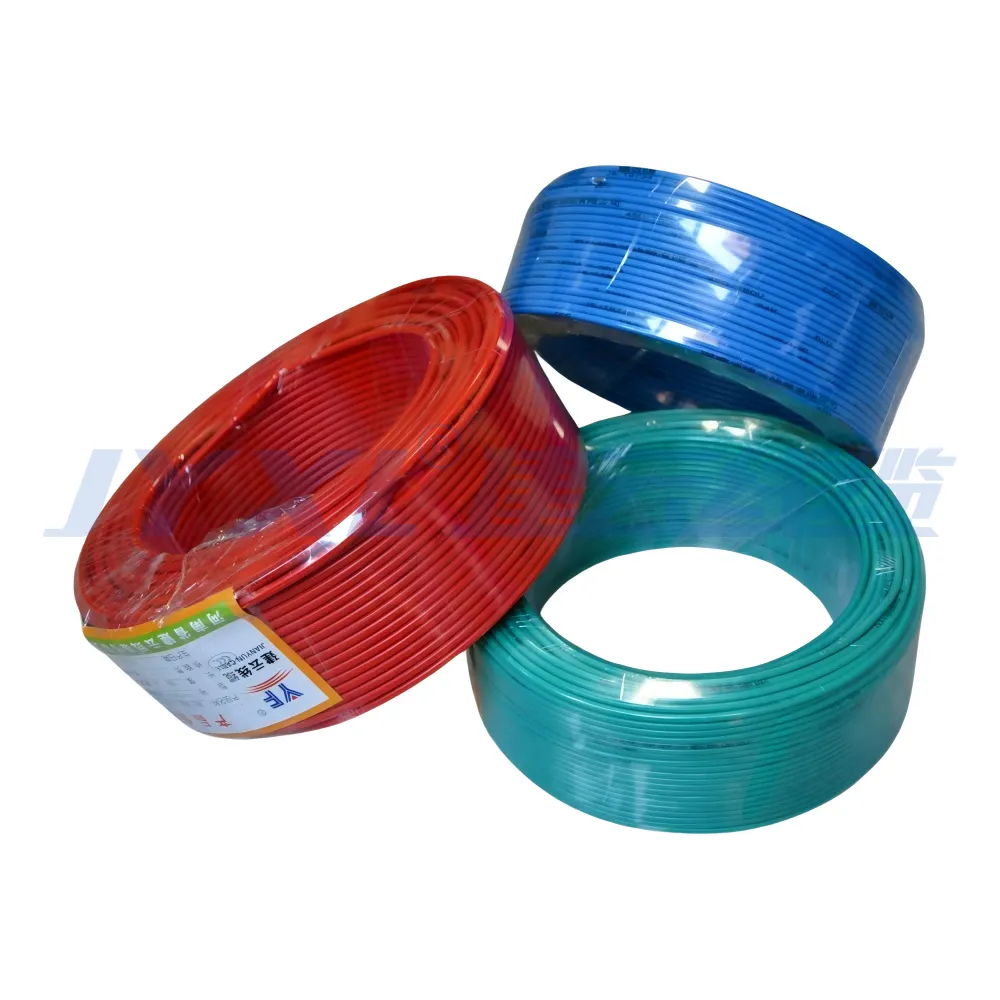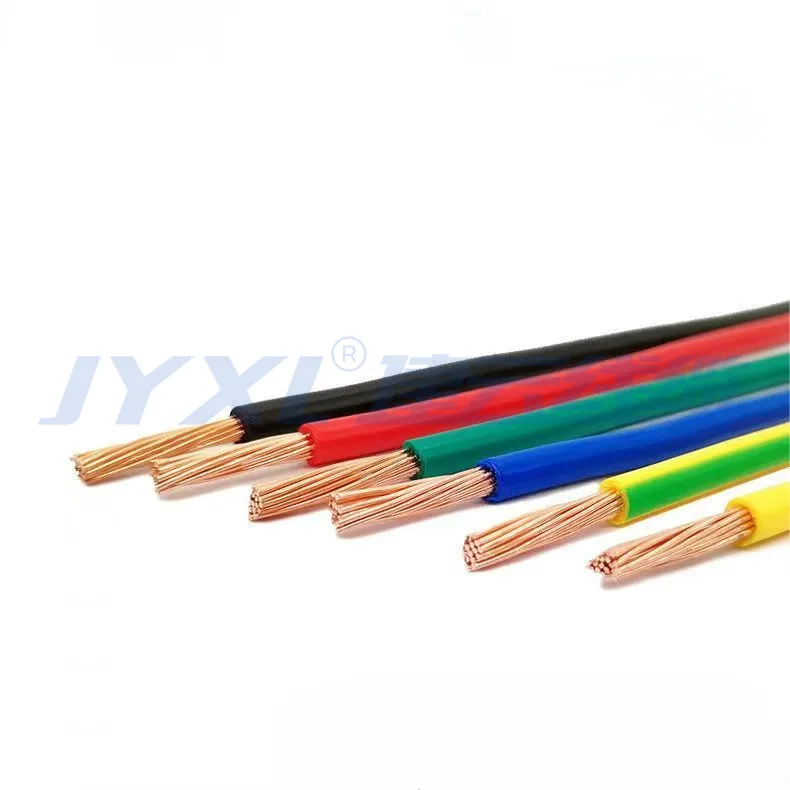Household Cables: What You Need to Understand
Time: 2025-05-13 15:16:56
Source: Henan Province Jianyun Cable Co., Ltd.
What Are Household Cables?
Household cables are electrical wiring systems designed to deliver power, lighting, and communication services within residential buildings. These cables connect electrical panels to outlets, switches, appliances, and lighting fixtures, ensuring safe and reliable electricity distribution. Typically rated for low to medium voltage (120V–240V), they are engineered for indoor use, with insulation and jacketing materials like polyvinyl chloride (PVC) or low-smoke zero-halogen (LSZH) to meet safety and fire codes. Household cables comply with standards such as the National Electrical Code (NEC), UL 83, and AS/NZS 5000, ensuring performance and safety. Common types include non-metallic sheathed cables (NM), armored cables (AC), and flexible cords, each suited for specific residential applications. Their design prioritizes ease of installation, durability, and safety, aligning with the protective features of cables like THHN, LSOH, or grounding wires discussed previously.

Construction and Types
Household cables are constructed to balance conductivity, safety, and ease of installation, with key components:
-
Conductor: Solid or stranded copper (59.6 MS/m conductivity) for efficient current flow, typically 14 AWG to 6 AWG, similar to THHN or grounding wires. Aluminum is less common due to higher resistance and safety concerns.
-
Insulation: Thermoplastic materials like PVC or nylon provide electrical isolation and heat resistance (up to 90°C for THHN), with LSZH options for enhanced fire safety, akin to halogen-free cables.
-
Jacket: PVC or LSZH outer sheaths protect against moisture, abrasion, and UV exposure, with some cables featuring armor (e.g., steel in AC cables) for added durability.
-
Grounding: Most cables include a bare or green-insulated grounding conductor to divert fault currents, complying with NEC requirements, similar to grounding wires.
Common types of household cables include:
-
NM Cable (Romex): Non-metallic sheathed cable with PVC insulation and jacket, used for general wiring (e.g., 14/2 for 15A circuits), rated 600V, 60°C–90°C.
-
UF Cable: Underground feeder cable with moisture-resistant PVC, used for outdoor or wet locations, similar to RHW.
-
AC Cable (BX): Armored cable with flexible steel or aluminum armor, used in exposed or high-impact areas, rated 600V.
-
THHN/THWN: Thermoplastic-insulated wire for conduit installations, offering heat (90°C) and moisture resistance, used in branch circuits.
-
Flexible Cords: Portable cords (e.g., SOOW, SJT) with rubber or TPE insulation for appliances and extension cords, similar to PUR cables.
-
Low-Voltage Cables: Cat5e/Cat6 or coaxial cables for telecom and networking, often shielded like multi-pair cables.
These cables support residential needs, with insulation and grounding features echoing LSOH or silicone cables for safety.

Key Benefits of Household Cables
Household cables offer several advantages for residential wiring:
-
Safety: Grounding conductors and flame-retardant insulation (per UL 83) reduce shock and fire risks, with LSZH options minimizing toxic smoke, similar to halogen-free cables.
-
Ease of Installation: Flexible designs like NM or THHN simplify routing through walls or conduits, reducing labor costs compared to rigid cables like trailing cables.
-
Durability: PVC or LSZH jackets resist moisture, abrasion, and aging, ensuring a 25–50-year lifespan, akin to XLPE or PUR cables.
-
Cost-Effectiveness: Affordable materials like PVC and copper make NM or THHN cables economical for home wiring, unlike specialized Teflon or trailing cables.
-
Versatility: Support a range of applications, from power (120V–240V) to low-voltage telecom, similar to multi-conductor cables.
-
Code Compliance: Meet NEC, UL, and AS/NZS standards, ensuring safe and legal installations, as with grounding or LSOH cables.
These benefits ensure reliable and safe electricity delivery, complementing the safety features of grounding or braided cables.
Applications in the Home
Household cables serve diverse functions in residential settings:
-
General Wiring: NM cables (e.g., 14/2, 12/2) power outlets and lighting in walls and ceilings, supporting 15A–20A circuits, similar to THHN in conduits.
-
Appliances: Flexible cords (e.g., SOOW) or THHN wires connect heavy appliances like ovens and dryers, typically 10 AWG for 30A circuits.
-
Outdoor/Underground: UF cables power exterior lighting, pools, or sheds, with moisture resistance akin to RHW or marine cables.
-
Exposed Areas: AC cables protect wiring in basements or garages, where impact resistance is needed, similar to armored cables.
-
Telecom/Networking: Cat5e/Cat6 or coaxial cables support internet, phone, and TV systems, often shielded like multi-pair cables.
-
Specialized: Low-voltage cables power doorbells, thermostats, or security systems, requiring flexibility like silicone cables.
These applications highlight their adaptability, mirroring the versatility of LSOH or flexible cords in safety-critical settings.
Safety Considerations
Safety is paramount when using household cables:
-
Proper Sizing: Use correct AWG sizes (e.g., 14 AWG for 15A, 12 AWG for 20A) to prevent overheating, per NEC ampacity tables.
-
Grounding: Ensure all circuits include grounding conductors connected to grounding rods or busbars, as discussed in grounding wire applications.
-
Fire Safety: Opt for LSZH cables in enclosed spaces to reduce toxic smoke, similar to halogen-free cables, and ensure flame-retardant insulation (per UL 83).
-
Moisture Protection: Use UF or THWN cables in wet locations to prevent insulation breakdown, akin to RHW or marine cables.
-
Overload Prevention: Avoid overloading circuits (e.g., >15A on 14 AWG) and use circuit breakers or GFCIs for added protection.
-
Professional Installation: Hire licensed electricians for wiring to ensure NEC compliance and avoid risks like improper connections or exposed wires.
These measures minimize hazards, aligning with the safety focus of LSOH or grounding systems.
Common Household Cables Comparison Table
Household cables vary in construction and use. The table below compares common types:
|
Feature
|
NM Cable
|
UF Cable
|
AC Cable
|
THHN/THWN
|
|
Conductor
|
Solid/stranded copper
|
Solid copper
|
Solid/stranded copper
|
Solid/stranded copper
|
|
Insulation
|
PVC
|
PVC (moisture-resistant)
|
PVC
|
PVC/nylon
|
|
Jacket
|
PVC
|
PVC
|
Steel/aluminum armor
|
None (conduit required)
|
|
Voltage Rating
|
600V
|
600V
|
600V
|
600V
|
|
Temperature
|
60°C–90°C
|
60°C
|
60°C–90°C
|
90°C (dry), 75°C (wet)
|
|
Applications
|
General wiring, dry
|
Outdoor, wet
|
Exposed, high-impact
|
Conduit, branch circuits
|
|
Grounding
|
Included
|
Included
|
Included
|
Separate wire
|
|
Cost
|
Low
|
Moderate
|
High
|
Low
|
Note: Verify specifications with NEC, UL, or AS/NZS standards for specific applications.
Tips for Choosing Household Cables
Selecting the right household cable ensures safety and performance:
-
Match Application: Use NM for indoor wiring, UF for outdoor/wet areas, AC for exposed locations, and THHN for conduits, based on environmental needs.
-
Check Ampacity: Select AWG sizes per NEC (e.g., 14 AWG for 15A, 10 AWG for 30A) to handle circuit loads, avoiding overheating.
-
Prioritize Safety: Opt for LSZH cables in high-traffic or enclosed areas for fire safety, similar to halogen-free cables.
-
Ensure Grounding: Verify cables include grounding conductors or add separate grounding wires, as discussed in grounding applications.
-
Verify Standards: Confirm compliance with NEC, UL 83, or AS/NZS 5000 for safety and legal requirements.
-
Consider Environment: Choose moisture-resistant (UF, THWN) or armored (AC) cables for wet or high-impact areas, akin to RHW or marine cables.
-
Consult Professionals: Engage licensed electricians to select and install cables, ensuring code compliance and proper connections.
These steps ensure reliable wiring, akin to selecting THHN, LSOH, or grounding cables for critical applications.
Conclusion
Household cables are essential for safe and efficient electricity distribution in residential settings, powering outlets, lighting, appliances, and telecom systems. With types like NM, UF, AC, and THHN, these cables offer flexibility, durability, and safety through features like PVC or LSZH insulation, grounding conductors, and compliance with NEC and UL standards. While cost-effective and versatile, their safe use requires proper sizing, grounding, and professional installation to prevent hazards like overheating or shocks. By selecting cables tailored to specific applications, environments, and safety needs, homeowners can ensure reliable performance and code compliance, building on the safety and adaptability of cables like LSOH, grounding, or THHN discussed previously.

